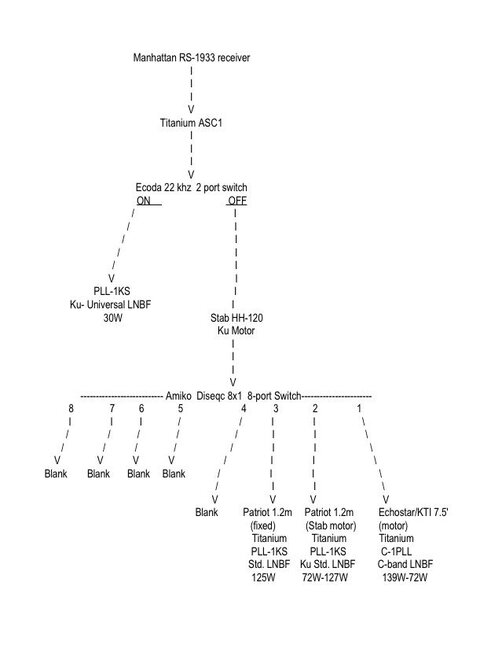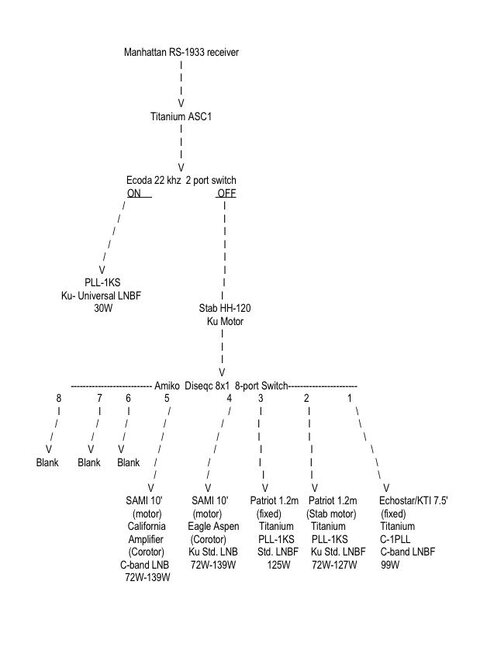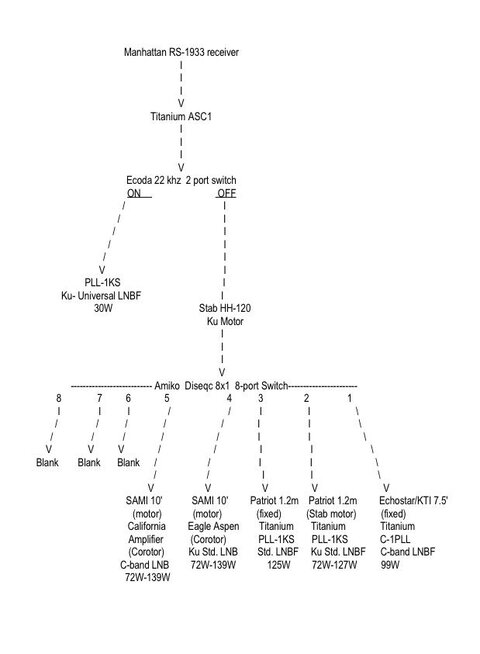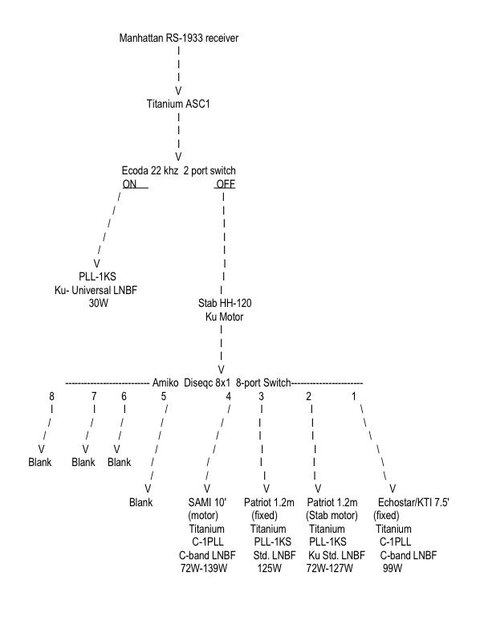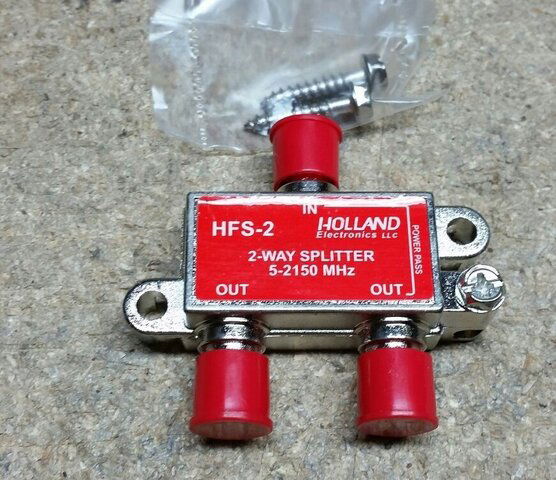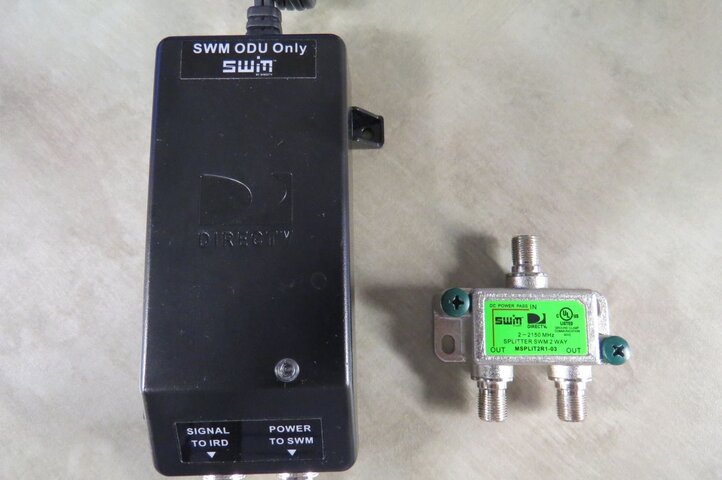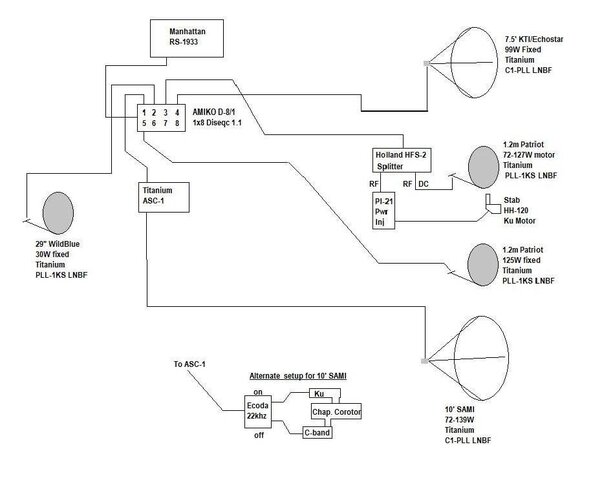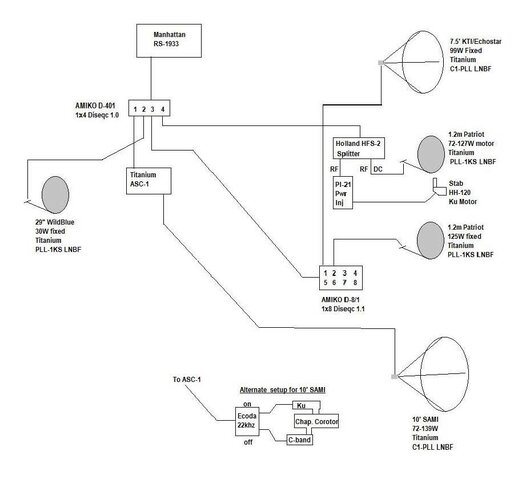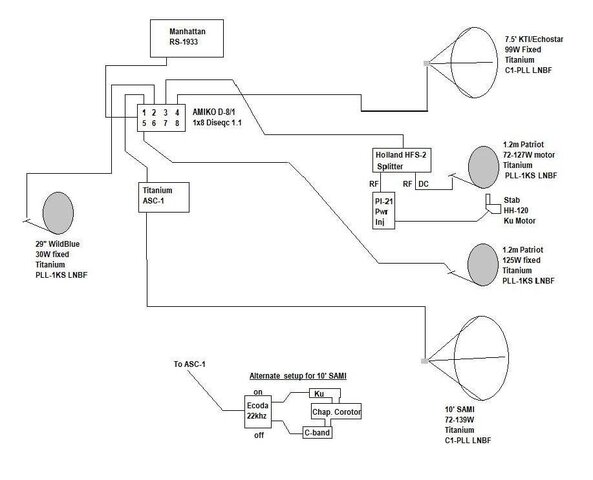The wiring diagram will not provide proper voltage to all electronics. LNBs require fixed 15-24Vdc and LNBFs are voltage switched 13/18Vdc. The LNB performance will be very poor or not work if provided 13Vdc.
The 22KHz switch doesn't appear necessary and only adds signal loss. Why not put this LNBF on the switch with all other LNB(f)s? If using a Universal LNBF, placing it after a 22KHz -ON port of a switch would only allow high-band (11.7-12.75) to be active. The Titanium PLL-1KS is not a Universal type LNBF, it is a Standard type. Please confirm the type of LNBF used on the 30W dish.
Placing a HH coax powered motor after a unpowered switch is a poor idea. The continuous over-rate power draws (add motor start-up and pass-through LNBF current for total port power draw) will likely cause premature switch failure. It would be best to either place the motor inline before the switch or to provide power insertion for the motor operation.
The easiest approach would to put a switch before the ASC1 to select and power the LNBFs and a switch after the ASC1 (set to Fixed: 18V) to select and power the LNBs.
An issue that I would be concerned with is the signal loss when stacking multiple switches and devices. One signal path is passing through a motor, 2 switches and a controller. The rated loss of that path is approx. 6dB.
To avoid multiple motor movement use USALS for the HH motor assignments and DiSEqC 1.2 for the ASC1 assignments. Disconnect the HH motor when programming the DiSEqC 1.2 settings or the HH motor may also save the settings and simultaneously move.
To A Raines point, some DiSEqC switches pass power on all ports at all times and only switch signal, while other switches switch both power and signal. Depends on the model. Have seen them operate both ways. The Amiko 8x1 model only passes power on the active port.
